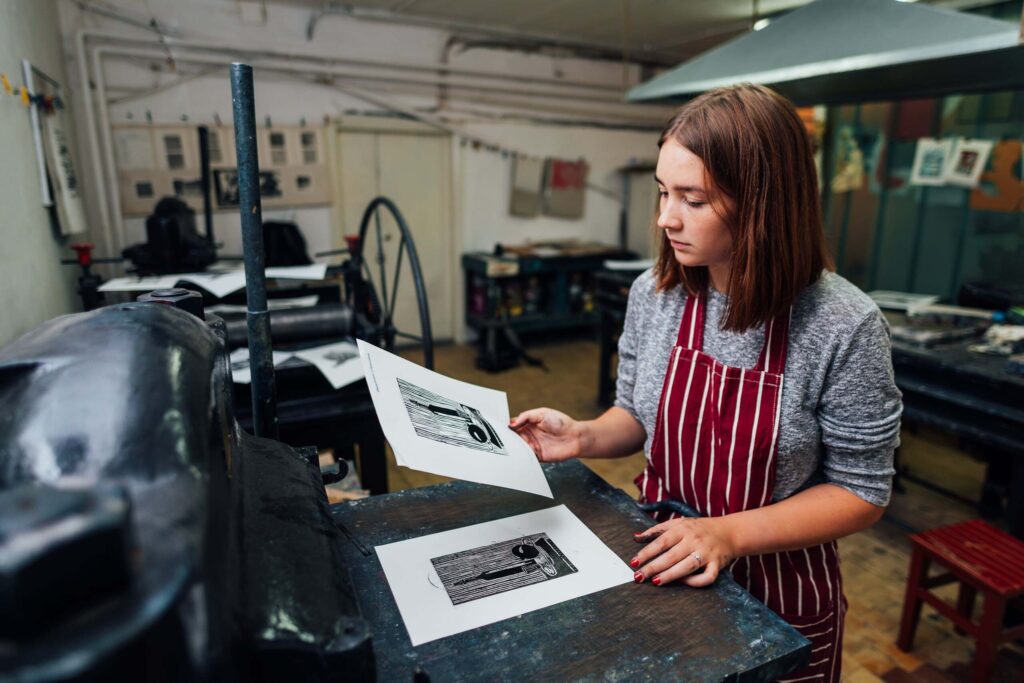Printing, in its simplest definition, is the process of reproducing text or images onto a medium, typically paper, using ink or other forms of toner. It is a fundamental technology that has had a profound impact on human society, communication, and knowledge preservation. Over the centuries, printing has evolved significantly, from the ancient woodblock technique to modern digital printers. In this article, we will explore the fascinating history and development of printing, and the impact it has had on our lives.
I. Ancient Beginnings: Woodblock Printing
The art of printing dates back to ancient times, with woodblock printing recognized as the earliest form. Originating in China during the Tang Dynasty (618-907 AD), this method involved carving characters or images onto wooden blocks and inking them before pressing onto paper or cloth. Though initially used primarily for textiles, woodblock printing eventually started to be used for reproducing books.
Woodblock printing extended its influence to neighboring countries like Japan and Korea, where it thrived and underwent further development. In Japan, the technique played a pivotal role in the dissemination of Buddhist teachings and artistic expression during the Heian period (794-1185 AD).
II. Printing Press and Moveable Type
The invention of the printing press in the 15th century revolutionized the printing industry worldwide. Johannes Gutenberg, a German goldsmith, is credited with creating the first mechanical printing press around 1440 AD. The Gutenberg press utilized moveable, reusable metal type, enabling the mass production of books and increasing the accessibility of knowledge.
Prior to Gutenberg’s innovation, books were mainly transcribed by hand, making them prohibitively expensive, rare, and available only to the elite. Gutenberg’s press marked a turning point, as books became more affordable and accessible to a wider audience. His most notable work, the Gutenberg Bible, remains an iconic symbol of the printing revolution to this day.
III. Renaissance and the Spread of Ideas
During the Renaissance, the printing press played a key role in spreading intellectual and cultural transformations across Europe. The ability to print books and written works in large quantities facilitated the exchange of ideas, leading to profound social, religious, and scientific shifts.
The likes of Leonardo da Vinci, Michelangelo, and Copernicus owe much of their fame to the availability of printed books. The printing press democratized knowledge, fueling the intellectual and artistic explosion that characterized the Renaissance period.
IV. Industrial Revolution and the Rise of Newspapers
The Industrial Revolution in the 18th and 19th centuries brought mechanization and further advancements to the printing industry. Steam-powered rotary printing presses were developed, increasing printing speed and efficiency. This innovation led to the rise of newspapers as a popular means of mass communication.
Newspapers quickly became an essential part of daily life, providing up-to-date information, political opinions, and entertainment. The increased accessibility to printed news allowed people to be better informed about current events, shaping public opinion and contributing to the formation of modern societies.
V. Photographic Printing and Offset Printing
The invention of photography in the 19th century sparked yet another significant progression in printing technology. Photographic printing techniques allowed for the reproduction of realistic images with incredible detail and precision.
Offset printing, developed in the early 20th century, introduced a new method of transferring ink to paper. It involved offsetting the ink from printing plates onto a rubber cylinder, which then transferred the image onto the paper. This process revolutionized commercial printing, enabling high-speed, high-quality reproduction of text and images.
VI. Digital Printing and the Modern Age
The advent of computers and the digital age brought about a monumental shift in printing technology. Digital printing refers to reproducing documents directly from digital files without the need for traditional printing plates. This allows for quick, on-demand printing with minimal setup and waste.
Inkjet and laser printers have become commonplace in homes, offices, and commercial settings. These printers offer tremendous versatility, capable of producing everything from vibrant color posters to crisp black-and-white documents. Additionally, digital printing has made personalization and customization more accessible than ever before.
VII. Future Innovations and 3D Printing
As technology continues to advance, the printing industry is likely to witness further innovations. One such innovation that has gained significant attention is 3D printing, also known as additive manufacturing. 3D printing allows for the creation of three-dimensional objects by layering materials based on a digital design.
With countless applications in various industries, including manufacturing, healthcare, and architecture, 3D printing holds incredible potential. From prosthetics and customized medical implants to prototype development and architectural models, the possibilities are vast.
VIII. Conclusion
Printing, in all its forms, has played an indispensable role in human history. From the humble beginnings of woodblock printing to the revolutionary printing press and the digital age, each new advancement has broadened access to knowledge and transformed the way we communicate.
As we reflect on the history and evolution of printing, it is easy to see the far-reaching impact it continues to have on our daily lives. As technology progresses, the future of printing is certain to bring even more transformative innovations. Whether it be in the form of faster, more efficient printers or groundbreaking developments like 3D printing, the journey of printing is far from over.








